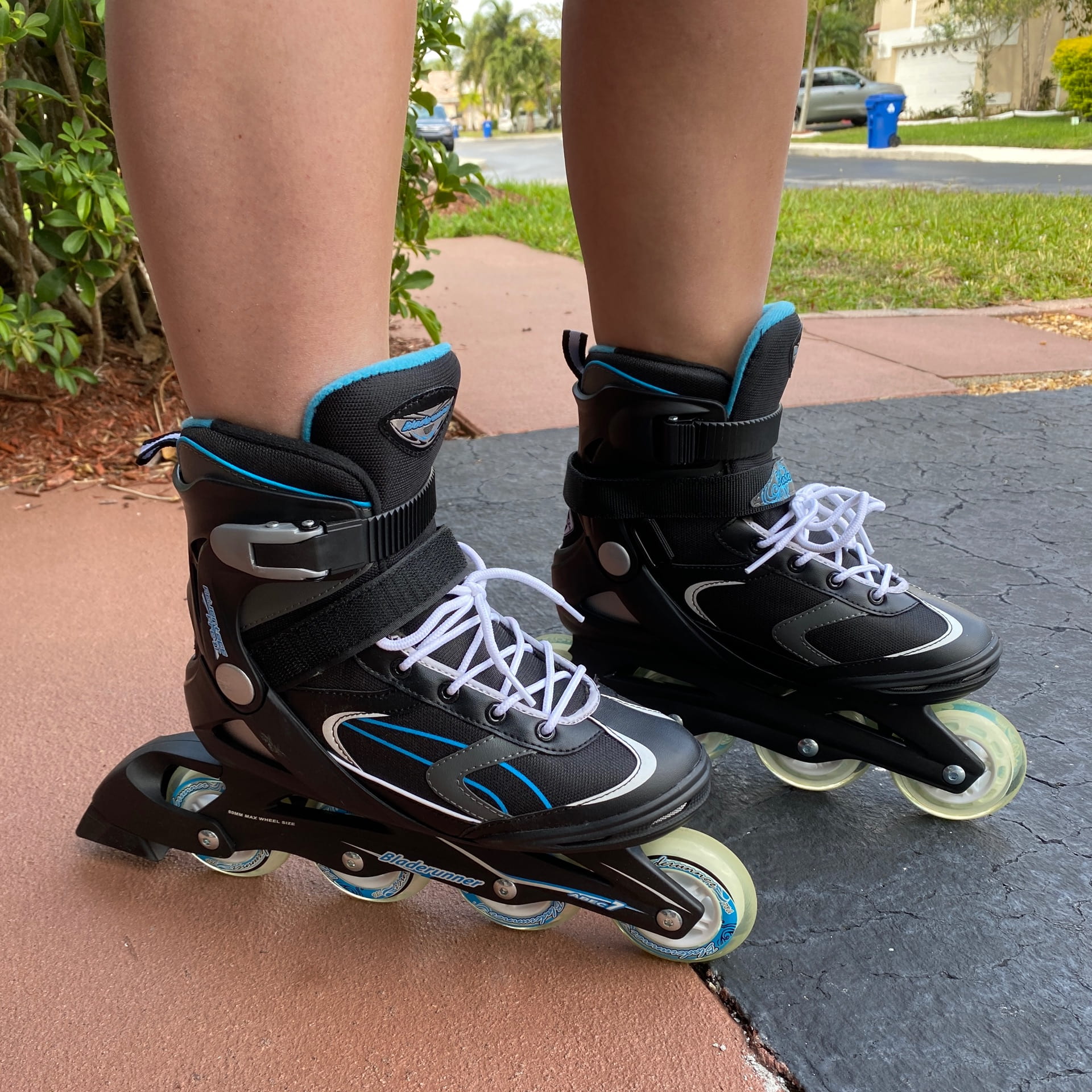Have you ever sat and watched the slew of people gliding down the Miami Beach Boardwalk on their skates? They look to be doing it with such ease, but is it really that simple? Is it possible to get sweaty and be breathless while cruising on a pair of rollerblades? If you were anything like myself as a kid, you used to love skating, and maybe still enjoy taking on the streets and sidewalks on eight wheels every now and then. If that is the case, then I have some great news for you. Skating isn’t only fun, but is a great source of cardio and strength building.
According to the Harvard Health Publications, you can burn almost the same amount of calories on skates as you do going for a jog. However, skating works different muscles than those worked whilst running. Inline skating focuses on your posterior muscles. So, for that to happen, instead of pushing your legs back as you do when you run, you push them out to the side. This ultimately strengthens the outside of your glutes more effectively than running does. Not only does skating work your legs, it also forces you to engage your core in an intense manner because of having to constantly regulate and stabilize your body weight on moving wheels.
Rollerblading is considered a strong exercise for those that do not wish to put too much stress on their joints, which is something runners experience. Rollerblading is also good for people that just want to spice up their existing workout routine. It is an addictive exercise, but you shouldn’t make it your only form of cardio. The repetitive motion of skating could potentially aggravate your body as the bent position that you have to be in while doing the exercise isn’t optimal for your natural spinal alignment.
If you do think that inline skating is something you’d be interested in, here are three ways to safely and functionally add it to your workout regimen.
Turn up the intensity
In order to enjoy the full benefits of inline skating, you have to be willing to get low and go fast. Elevate the burn in your legs by lowering your upper body while skating into a half squat position. You can also incorporate intervals by switching paces between going as fast as your body allows and then slowing down to a leisure-like pace. Once you become more advanced, hills are also an option if you seek to challenge your muscles even more. Just make sure they aren’t too steep or you’ll basically fly back down them.
Correct form is everything
Your force should come from pushing out to the sides with your legs. So, you have to center your weight back on your heels for maximum leverage. To stay balanced, swing your arms back and forward at a slight angle, alternating and crossing to the other side of your body a little bit more than they do when you do a similar motion whilst running. As mentioned before, stay low and keep your knees bent. This is essential to the engagement of both your core and leg muscles.
Suit up in protective gear
If you’re a beginner, you’ll want to dress down in elbow pads, knee pads and a helmet. After all, you are going to be moving fairly fast on a set of wheels that slip and slide on any surface that is moderately flat. For optimal protection against falls that are bound to happen, make sure you wear those bulky handguards.
What are you waiting for? Get your gear on and get to cruising.


